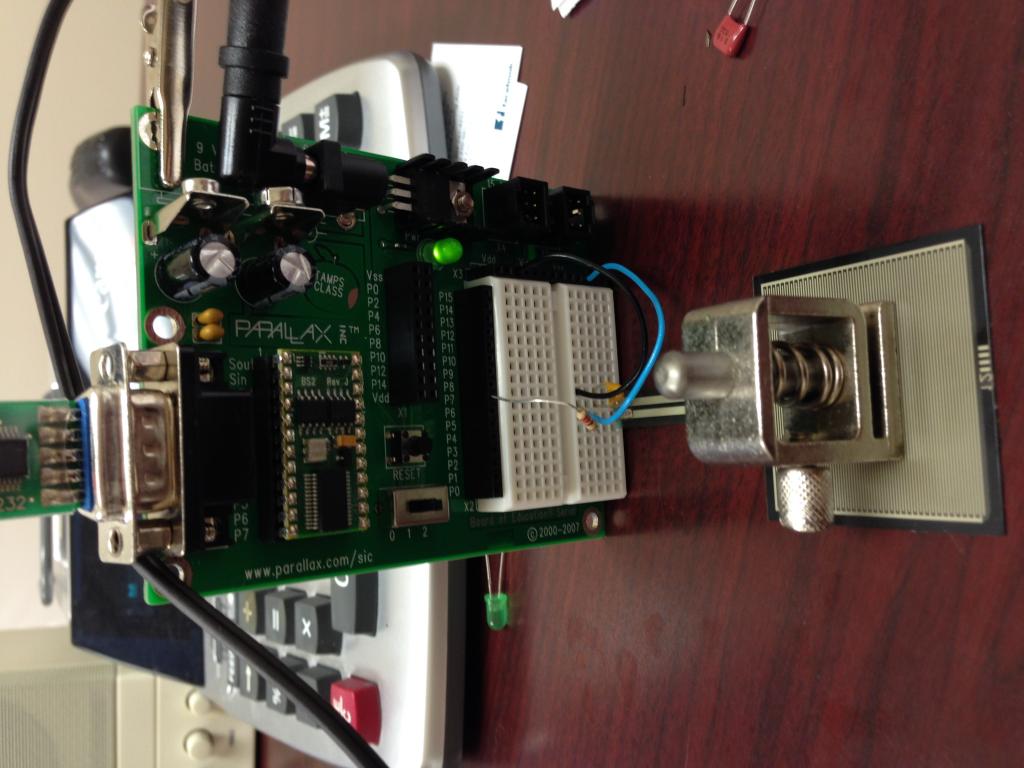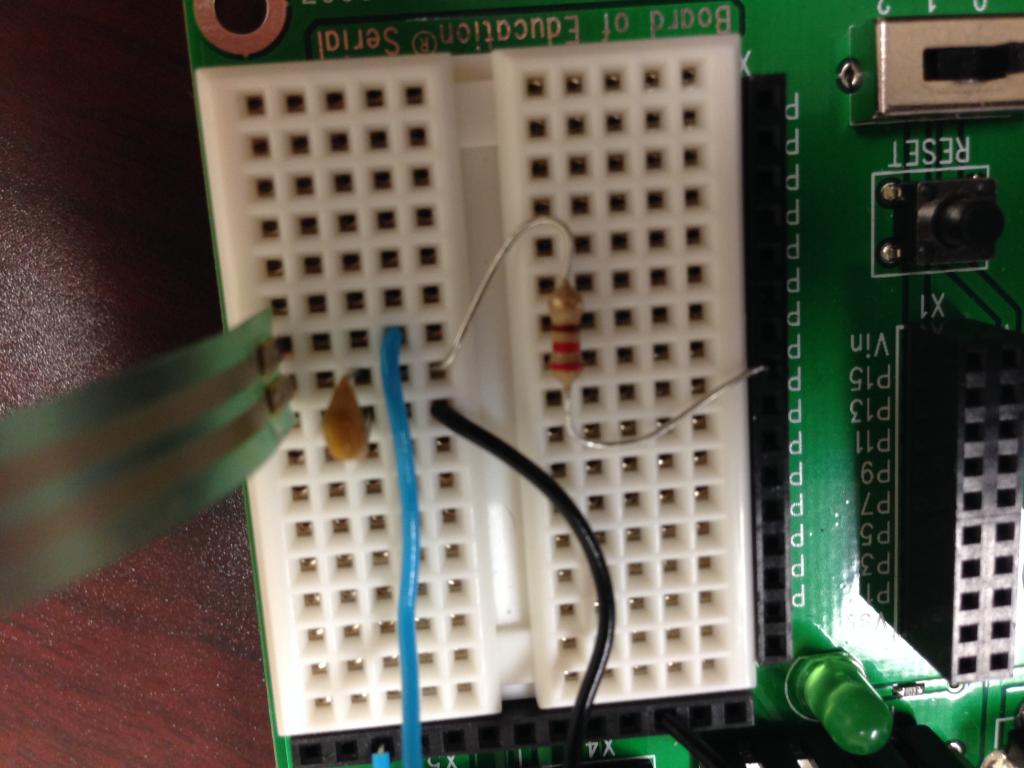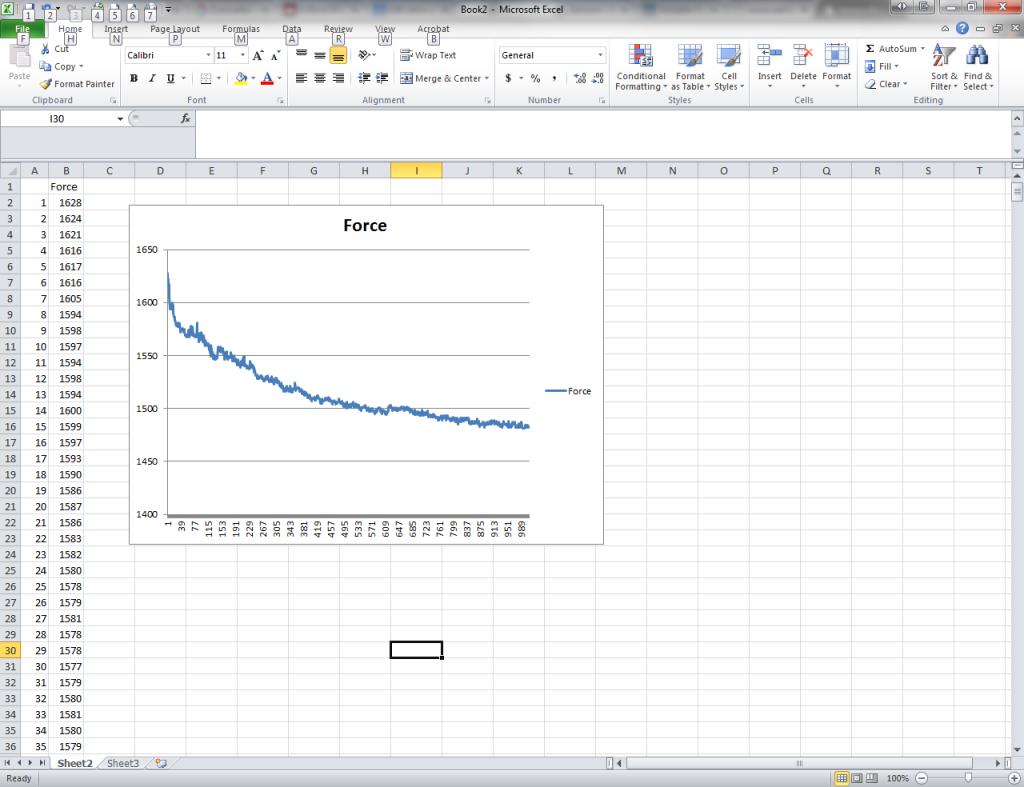Interlink FSR 406
Hello was wondering if any of you had experience with interlink FSR (force sensing resistors), or other FSR im sure they are pretty similar. I am having a problem using mine reliably.
Here is my set up. pretty sure i did set up A but i am still learning.

this is what i did . capacitor is .1uF


This is my code
' {$STAMP BS2}
' {$PBASIC 2.5}
'
[ Declarations ]
Force VAR Word ' Stores raw output
sensorPin CON 7
counter VAR Word
'
[ Main Routine ]
counter = 0
Measure:
HIGH sensorPin ' Discharge the capacitor
PAUSE 20
counter = counter + 1
RCTIME 7,1,Force ' Measure RC charge time
DEBUG DEC counter, " ,", DEC Force,CR
GOTO Measure
So when i go to run my program i get readings but i have found that the force decays over time. i inserted a chart into excel and this is what i get.

this does not make for a very accurate reading. I have not touched or breathed on the sensor. I have tried this with many different items and results are similar. has anyone else experienced this or am i doing something wrong? Thanks
Here is my set up. pretty sure i did set up A but i am still learning.

this is what i did . capacitor is .1uF


This is my code
' {$STAMP BS2}
' {$PBASIC 2.5}
'
[ Declarations ]
Force VAR Word ' Stores raw output
sensorPin CON 7
counter VAR Word
'
[ Main Routine ]
counter = 0
Measure:
HIGH sensorPin ' Discharge the capacitor
PAUSE 20
counter = counter + 1
RCTIME 7,1,Force ' Measure RC charge time
DEBUG DEC counter, " ,", DEC Force,CR
GOTO Measure
So when i go to run my program i get readings but i have found that the force decays over time. i inserted a chart into excel and this is what i get.

this does not make for a very accurate reading. I have not touched or breathed on the sensor. I have tried this with many different items and results are similar. has anyone else experienced this or am i doing something wrong? Thanks


Comments
i did that and here are my readings.
as you can see pretty dead on every time so im thinking FSR. I am not sure how to test with the ohm meter to be honest. i will look up how to use that online to see what i should do . thanks for the feedback
I thought i would try the same thing to the resistor. so i tested the resistor and the numbers were consistent.
do you know what this mean? i take it as the FSR is not outputting consistent numbers.
i tried a brick ( i balanced it on my wedding ring) and the readings are stable. thanks for the help now i have some testing to see where my limits are.
thanks again .
CREEPThe change in LOAD CELL SIGNAL occurring with time while under load and with all environmental conditions and other variables remaining constant. Normally expressed in units of % of applied load over a specified time interval. It is common for characterization to be measured with a constant load at or near CAPACITY.
and i found other users with same problem
https://forum.sparkfun.com/viewtopic.php?f=14&t=36728
Per your link in #9 it appears that the Flexforce sensors do not seem to have this problem.
If your intention was to make a low cost scale, I don't think the FSR is going to do it for you.
they stated polymeric force sensors will do this. the resistance will change downward about 5% per unit of log(time) with 1k load
which means 5% after the first 10s another 5% after 100s ect
i think i am going to look for a good load cell that is pretty cheap.
thanks for helping me figure it out